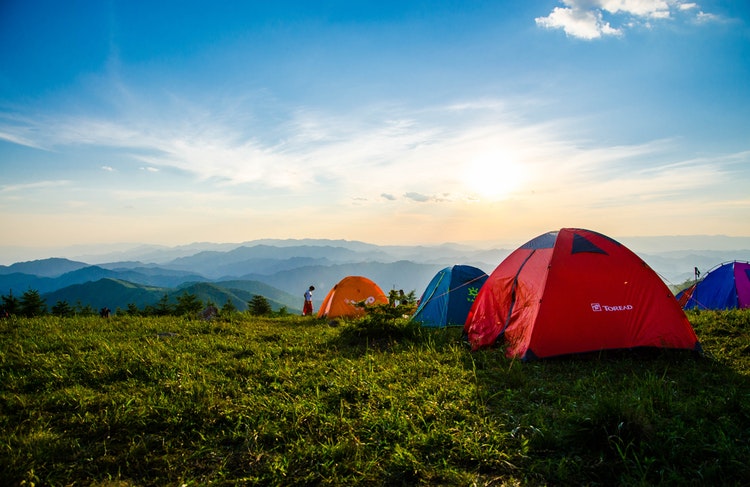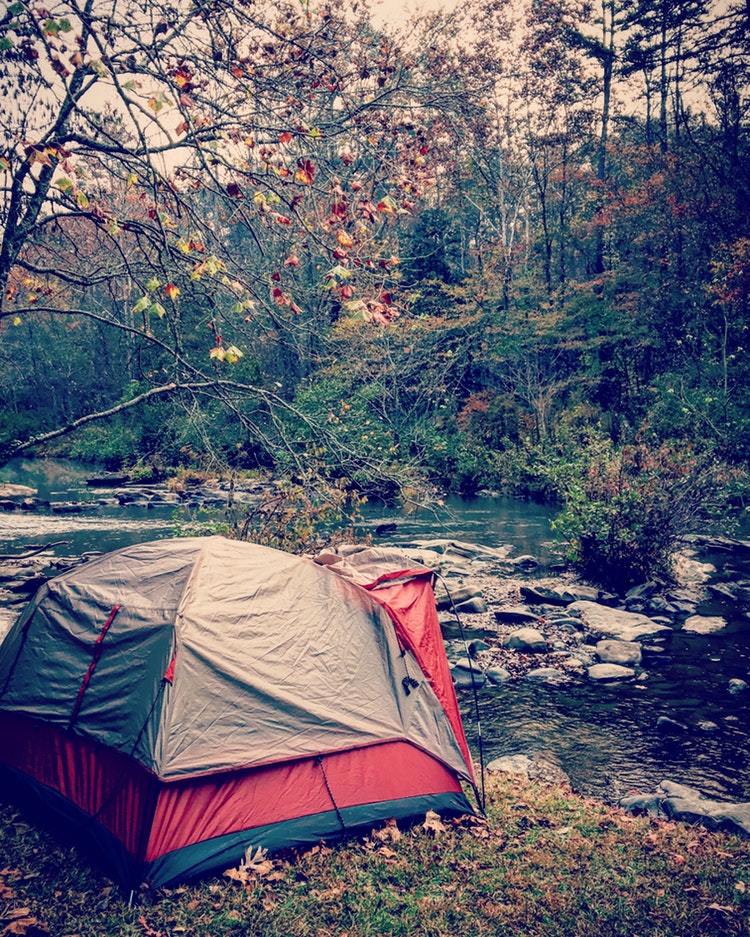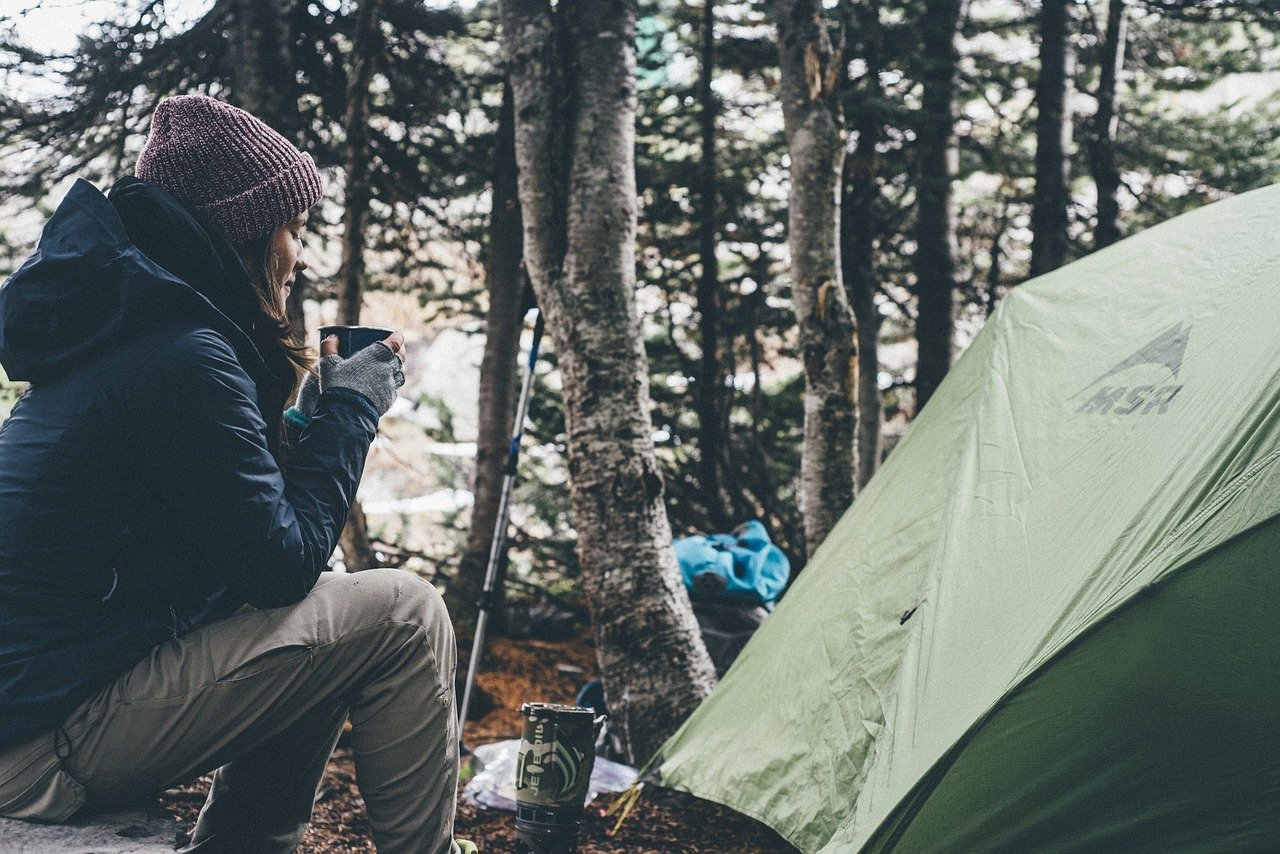Many tents are made with bottoms that are not quite as water-resistant as campers may hope. Even when selecting an optimally-drained camp site, pitching your tent straight on the ground can lead to a case of the soggy sleeping bags.
To combat this, seasoned campers use footprints underneath their tents. A tent footprint is another layer of more robust, waterproof fabric laid down between the tent and the ground. Footprints serve to keep you dry while you sleep, even in wetter weather.
Table of Contents
Do I Need a Tent Footprint?

Footprints are used to help protect your tent’s floor from damage and add extra water protection.
Many tent materials are water resistant, but not waterproof. The difference is how well they resist water under pressure or suction. Water-resistant fabrics bead water off, but if it pools against the fabric, all bets are off.
When you lay an absorbent sleeping bag against a water-resistant fabric that’s wet on the outside, even just with morning dew, expect to get wet.
Depending on what material your tent floor is made from, the terrain you camp in, and what kind of weather you’re expecting, you might be fine without, or you may be better off with a footprint.
How Water-Resistant is Your Tent Floor?
Tents are designed to keep you warm, dry, and free of bugs. They’re also made with weight in mind.
As with most designs, tents are a balancing act, with trade-offs to be made in improving any one particular trait. Ultra-light tents especially tend to make sacrifices to reduce weight.
Tent floors can be made from the same material as the walls, or from extra-durable, more water-resistant materials. Ultra-light tents will often use the same material for tent walls and the floor, and they might not be the most water-resistant.
If your tent has a tarp bottom, you probably don’t need a footprint. If it’s super thin nylon, you probably do. Anywhere between, and it becomes more of a judgement call, with the next two questions weighing more heavily.
What Kind of Terrain do You Camp On?

Footprints serve to protect the tent floor as well. They’re usually much cheaper than the tent itself, otherwise they wouldn’t make much sense.
If you camp on gravel pads in campgrounds, or out in rugged terrain, you probably want a footprint to help protect your tent. Anywhere with low thorny brush, sharp rocks, or even lots of stiff spruce needles you’ll want some extra protection for your tent.
When camping on snow, I don’t bother with a ground tarp / footprint. My winter tent is a GEERTOP Ultralight 2 Man, which has a heavier nylon for the floor. I also don’t worry much about the snow stabbing through my floor in any case.
My 3-season tent is a Eureka! Apex 2xt, which has a thin nylon floor that would quickly be shredded by the crushed granite popular in my area, so I always use a footprint when camping with it.
Even on back country trails, crushed granite shows up on strips of trail, then gets nestled into hikers’ boots, and makes its way to the campsites.
How Wet is the Weather in Your Area?
If you’re camping out in the Sahara or the American West, odds are good you won’t need extra protection from moisture.
If instead you’re headed out to the Pacific Northwest or much of the UK, you’re likely to want every extra protection you can get against moisture.
In the Upper Midwest, weather forecasts are only good for a few days, so I just assume it will rain at some point during any longer trips.
This goes for rain-flies as well, even when the weather is forecasted to be dry. I absolutely hate waking up soaking wet, and am quite willing to carry a few extra ounces to avoid that.
What are Tent Footprints Made Of?
Footprints come in a variety of styles, from lightweight nylon sheets made to fit a specific model of tent to ultra-durable canvas, polyethylene tarp, or polyethylene sheeting.
The material fits the purpose. Heavier-duty fabrics will protect better from sharp rocks and sticks, while lighter fabrics will only offer a little extra moisture protection.
Can I Use a Tarp Instead?
Absolutely!
I always use a full-sized tarp for a tent footprint, as that’s what we did at camp growing up.
The effective size of the tent footprint needs to be a couple inches less than the tent floor area. If you let the edges get to close to peeking out from under the tent, they can start to funnel water underneath.
Anytime you use a tarp that’s larger than the tent, it’s absolutely critical to tuck it underneath the tent to prevent collecting water from outside the tent and pooling it underneath the floor. Tuck the excess down, underneath the main body of the tarp, to avoid trapping any water that might get between the tarp and floor.
If you’re looking for a perfect fit, you might be able to get a tarp sized just for your tent, or you can cut down a larger tarp and melt the edges to prevent fraying.
Footprints don’t need to be fancy to be effective, but if you’re looking for the lightest backpacking options, then do consider the model-specific footprints offered by many manufacturers.
Otherwise, you could grab some lightweight fabric and trim it to size yourself. Just make sure to roll a good seam on the edge to make it last!
How Else Can I Protect a Tent Floor?

Always kick off your shoes before you enter a tent. Gravel, grit, and dirt stuck in the treads of your shoes can tear up the tent floor in a hurry.
You don’t need to leave them outside (though you might want to after a whole day of hiking), and in spider or scorpion country, I encourage you to bring them inside.
If you bring your dog camping, you may want to consider some internal floor protection as well, like blankets or a floor mat. Your dog’s claws can easily snag on the tent floor and damage it.
What’s Next?
Check out my article Get Started Camping for all sorts of tips on what to know, where to go, and what to bring along for a great camping outing!


